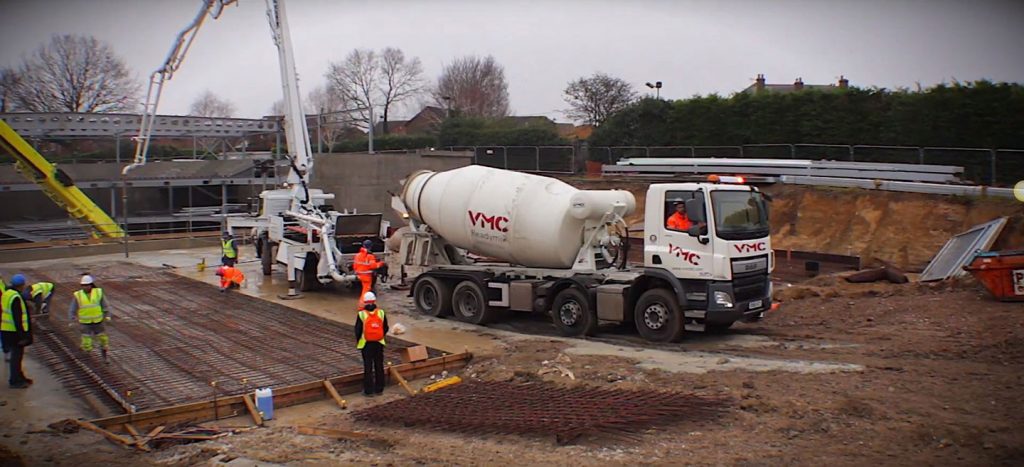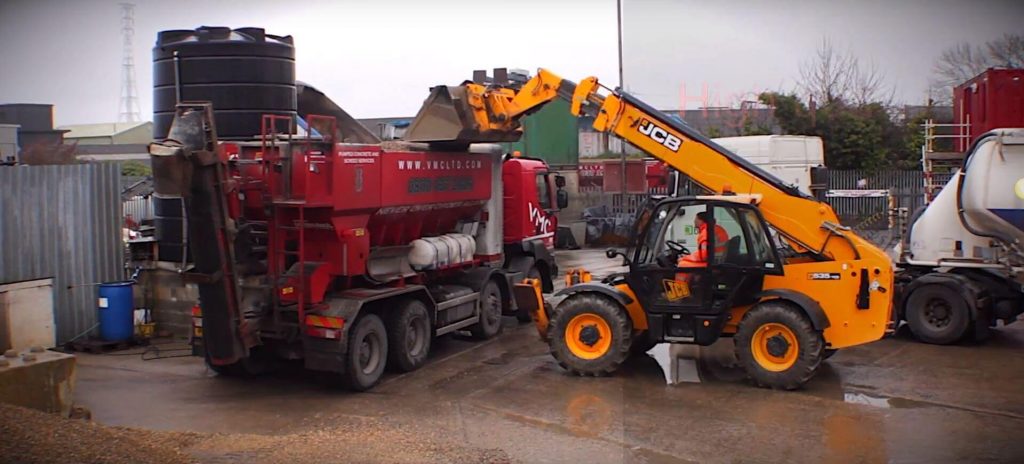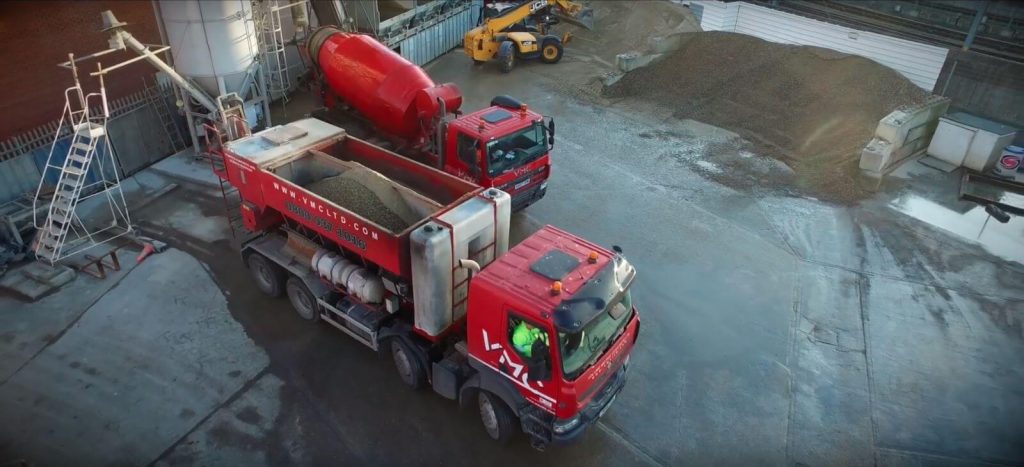Ready Mix Concrete supplier serving Kent & S.E London since 2006
Since 2006 Volume Metric Concrete has been the first choice of concrete supplier for homes and business across the South East. Contact us today for outstanding deals on ready mix concrete, mix on-site concrete, pumping and screed.
Ready Mix Concrete Suppliers Covering Kent
As well as being a top provider of concrete, we at Volume Metric Concrete pride ourselves on the knowledge and openness of our staff. If you have any questions about which product will best suit your project, don’t hesitate to get in touch. We’ll always provide expert assistance and a free quote before you commit to any of our services.
- Established in 2006
- Free quote and advice
- Eco-friendly operation
- No hidden fees
- BSI Kitemark Accredited

We are your number one, local concreate expert. If you have any questions or queries please do not hesitate to contact our help team.

We are your number one, local concreate expert. If you have any questions or queries please do not hesitate to contact our help team.

We aim to eliminate waste every step of the way and have strict Health & Safety procedures. We also have stringent Ethics & Standards policies.
Services + FAQ's
Laying ready mixed concrete in wet weather can be challenging, but it is possible if proper precautions are taken. Wet weather can have a significant impact on the quality of the concrete, so it is important to understand the risks involved and the measures that can be taken to ensure a successful concrete pour.
Before the Pour
Before pouring concrete in wet weather, it is essential to assess the situation carefully. Factors such as the temperature, humidity, and rainfall forecast should be considered. The temperature should be at least 2-3°C and rising. The relative humidity should be less than 75%, and the forecast should not predict heavy rain within 24 hours of the pour.
The site should be prepared accordingly. The subgrade should be compacted and leveled, and any water should be removed. The formwork should be installed securely and should not leak. The reinforcing steel should be in place, and any necessary concrete additives should be prepared.
During the Pour
During the concrete pour, it is important to ensure that the concrete does not become too wet. Excessive water in the mix can weaken the concrete and increase the risk of cracking. To avoid this, the water content of the mix should be reduced, and the slump should be kept as low as possible.
To further reduce the risk of cracking, the concrete should be placed in thin layers, and each layer should be compacted thoroughly. This will help to remove any air pockets and ensure that the concrete is evenly distributed. The use of a vibrator can also help to achieve a more even finish.
After the Pour
After the concrete pour is complete, it is important to protect the surface from any further moisture. If the rain begins to fall during the curing process, the surface of the concrete should be covered with a waterproof material. This will prevent the concrete from becoming too wet and will help to ensure that it cures properly.
If the concrete does become too wet during the curing process, it may be necessary to use a dehumidifier to remove any excess moisture. This can help to prevent the concrete from cracking or becoming weakened.
Conclusion
In conclusion, laying concrete in wet weather can be challenging, but it is possible if the proper precautions are taken. Before pouring, the temperature, humidity, and rainfall forecast should be assessed, and the site should be prepared accordingly. During the pour, the water content of the mix should be reduced, and the slump should be kept as low as possible. After the pour, the surface of the concrete should be protected from any further moisture to ensure proper curing. By following these guidelines, it is possible to successfully lay concrete in wet weather.
The grade of concrete required for a driveway depends on a number of factors, including the weight of the vehicles that will be using the driveway, the climate in the area, and the local building codes. In general, a driveway should be made of a strong and durable concrete mix that can withstand heavy loads and resist cracking and erosion. In this article, we will discuss the factors that influence the grade of concrete required for a driveway and provide some guidance on selecting the appropriate grade for your specific needs.
Weight of Vehicles
One of the primary factors to consider when selecting the grade of concrete for a driveway is the weight of the vehicles that will be using the driveway. The weight of the vehicle will determine the thickness of the concrete slab that is required, and the strength of the concrete mix that is needed to support that weight. Generally speaking, the heavier the vehicle, the thicker and stronger the concrete slab needs to be.
For example, if you plan to park a small car on your driveway, you may only need a concrete slab that is 4 inches thick. However, if you plan to park an SUV or a pickup truck on your driveway, you may need a slab that is 6 inches thick or more. In addition, you will need to select a concrete mix that has a high compressive strength to support the weight of the vehicles.
Climate
Another factor to consider when selecting the grade of concrete for your driveway is the climate in your area. The temperature and moisture levels in your region can have a significant impact on the durability and longevity of your driveway. In areas with harsh winters, for example, the freeze-thaw cycle can cause the concrete to crack and break apart over time.
To prevent this from happening, it is important to select a concrete mix that is designed to withstand the temperature and moisture conditions in your area. A mix with a high freeze-thaw resistance will be more durable in areas with frequent temperature fluctuations. Additionally, you may need to consider adding reinforcement to the concrete, such as steel mesh or rebar, to help prevent cracking.
Building Codes
Finally, it is important to consider the local building codes when selecting the grade of concrete for your driveway. Building codes vary by region, and they may specify minimum requirements for the thickness and strength of concrete driveways. In addition, some codes may require that the concrete be reinforced with steel mesh or rebar.
Before selecting a grade of concrete for your driveway, you should check with your local building department to determine what the requirements are in your area. Your contractor should also be familiar with the local codes and be able to advise you on the appropriate grade of concrete for your specific situation.
Selecting the Right Grade of Concrete
Based on the factors discussed above, there are several grades of concrete that may be appropriate for a driveway. Here are some examples:
Standard Concrete Mix: A standard concrete mix typically has a compressive strength of 2,500 to 3,000 psi (pounds per square inch). This type of mix is appropriate for small cars and light trucks, and for areas with mild climate conditions. The thickness of the slab should be at least 4 inches.
Reinforced Concrete Mix: A reinforced concrete mix includes steel mesh or rebar to add strength to the concrete. This type of mix is appropriate for heavier vehicles, such as SUVs and pickups, and for areas with harsh climate conditions. The thickness of the slab should be at least 6 inches.
High-Strength Concrete Mix: A high-strength concrete mix has a compressive strength of 4,000 psi or higher. This type of mix is appropriate for heavy-duty applications, such as commercial driveways or areas with extremely heavy vehicles. The thickness of the slab should be at least 6 inches.
The grade of concrete you should use for a single-story extension in the UK depends on several factors, including the size and weight of the structure, the soil conditions on the site, and any specific building regulations or codes that apply to your area. However, in general, a standard concrete mix with a strength of at least C25/30 should be suitable for most single-story extensions.
C25/30 is a common strength grade of concrete used in building construction and is designed to have a compressive strength of 25 N/mm² after 28 days of curing. This strength is sufficient to support the weight of a single-story extension and provide a durable and long-lasting foundation for the structure.
However, depending on the specific requirements of your project, your contractor or engineer may recommend a different strength grade of concrete. For example, if the soil conditions on your site are particularly poor or if your extension is a particularly large or heavy structure, a higher strength grade of concrete may be required. Similarly, if your area has specific building regulations or codes that require a higher strength grade of concrete, you will need to comply with those requirements.
In addition to the strength grade of concrete, there are other factors to consider when choosing the right concrete mix for your extension, including the mix proportions, aggregate type and size, and any specific additives or admixtures that may be required to improve the workability, durability, or other properties of the concrete. Your contractor or engineer can provide guidance on these factors based on the specific requirements of your project.
It is important to ensure that the concrete is mixed and poured correctly, and that the curing process is managed properly, to ensure that the foundation for your extension is strong, stable, and durable. Your contractor or engineer should follow best practices for concrete placement and curing, including ensuring that the concrete is properly compacted, avoiding overloading the forms or supports, and taking steps to prevent cracking or other damage during the curing process.
The time required before you can park your car on a newly concreted driveway in the UK depends on several factors, including the type of concrete mix used, the weather conditions, and the thickness of the concrete slab. In general, you should wait at least seven days before parking a car on a newly concreted driveway, but it is important to follow the specific instructions provided by your contractor or the manufacturer of the concrete mix.
Here are some things to consider when determining how long to wait before parking your car on a newly concreted driveway:
Type of Concrete Mix: Different concrete mixes require different curing times before they are strong enough to support the weight of a car. For example, a standard concrete mix may require seven days of curing time before it is ready for vehicle traffic, while a high-strength concrete mix may require up to 28 days of curing time.
Weather Conditions: The weather conditions during the curing period can also affect how long you need to wait before parking on the driveway. In general, warmer temperatures and lower humidity can speed up the curing process, while cooler temperatures and higher humidity can slow it down.
Thickness of the Concrete: The thickness of the concrete slab can also impact the curing time. Thicker slabs will take longer to cure than thinner slabs.
Instructions from the Contractor or Manufacturer: It is important to follow the specific instructions provided by your contractor or the manufacturer of the concrete mix. They may recommend a specific curing time based on the type of mix and the weather conditions in your area.
In general, you should avoid parking on a newly concreted driveway for at least seven days to allow the concrete to cure and reach its full strength. During this time, it is important to keep the surface of the concrete moist to prevent it from drying out too quickly and cracking. Your contractor may recommend covering the concrete with a curing compound or a plastic sheet to help retain moisture.
After the initial curing period, you can slowly begin to use the driveway for light foot traffic, but you should still avoid parking heavy vehicles on it for several more days. It is important to gradually increase the weight on the concrete surface to allow it to fully cure and prevent cracking or other damage. Your contractor can provide guidance on how long you need to wait before parking heavy vehicles on the driveway.
Choose The Best Ready Mix Concrete Company In Kent
Choosing the best ready mix concrete company in Kent can be a daunting task, especially if you have little experience with concrete. Here are some factors to consider when choosing the best ready mix concrete company in Kent:
Quality: The quality of the concrete is a crucial factor to consider. The best ready mix concrete companies in Kent will have a reputation for providing high-quality concrete that meets the required specifications. They should have a quality control process in place to ensure that the concrete is consistent in terms of strength, durability, and appearance.
Experience: Choose a ready mix concrete company with years of experience in the industry. Experienced companies have a deep understanding of concrete and can provide valuable advice on the best concrete mix design for your project. They will also have a proven track record of delivering high-quality concrete to various projects.
Reputation: Check the reputation of the ready mix concrete company you are considering. A good company will have a positive reputation in the industry and among its customers. You can check for reviews online, ask for referrals from people you trust, or even visit some of the company’s past projects to see the quality of their work.
Customer service: The best ready mix concrete companies in Kent will have excellent customer service. They will have knowledgeable staff who can answer any questions you may have about concrete, provide advice on the best mix for your project, and provide timely delivery of the concrete. Good communication is key, and the company should be responsive to your needs and concerns.
Pricing: Cost is always an important factor to consider when choosing a ready mix concrete company. However, it’s essential to remember that the cheapest option may not always be the best. Consider the quality of the concrete, the company’s reputation, and customer service before making a decision. A good company will offer competitive pricing while still providing high-quality concrete and excellent service.
Delivery: Check the delivery options available from the ready mix concrete company you are considering. Choose a company that can deliver the concrete to your site in a timely and efficient manner. The company should have the necessary equipment and experienced drivers to ensure that the concrete is delivered safely and accurately.
Sustainability: Consider the environmental impact of the ready mix concrete company you are considering. Choose a company that is committed to sustainability and uses eco-friendly materials and practices.
In summary, when choosing the best ready mix concrete company in Kent, consider the quality of the concrete, the company’s experience and reputation, customer service, pricing, delivery options, and sustainability practices. Take the time to research and compare companies to ensure that you choose the best one for your project.

